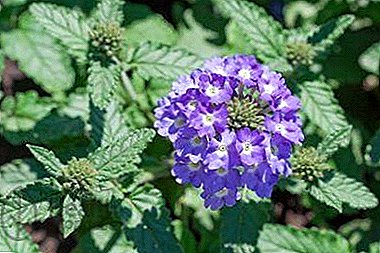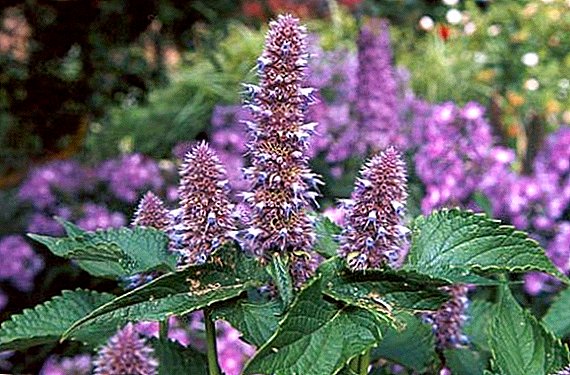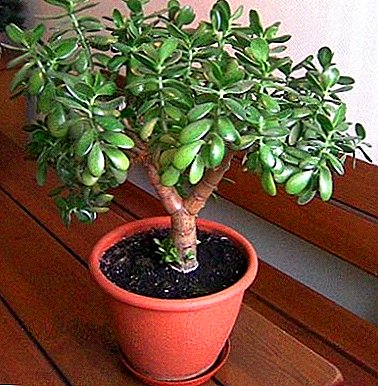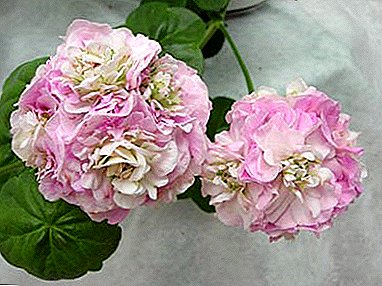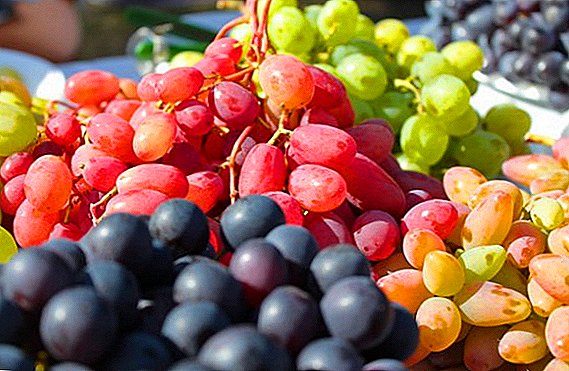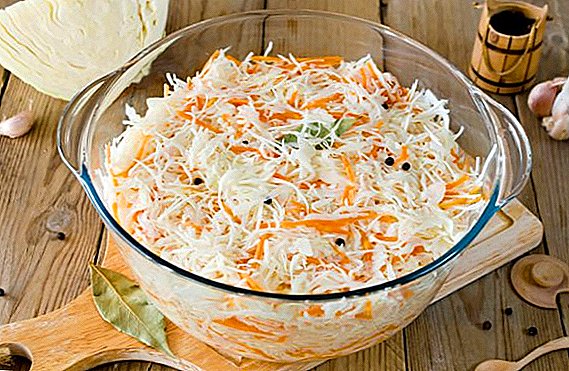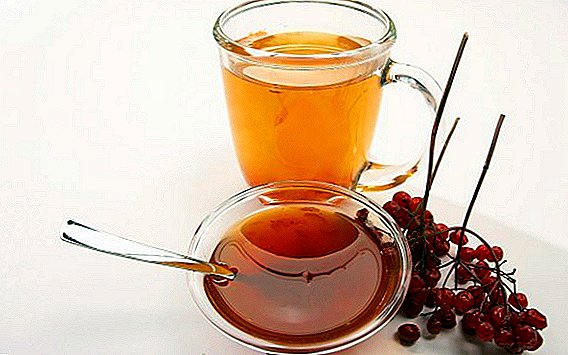 It is believed that honey drinks became the progenitors of all modern alcoholic beverages. Already the ancient Egyptians, Romans, Greeks, Vikings, and Maya used honey to prepare an invigorating and amusing low-alcohol drink. Mead was well known to the inhabitants of Ancient Russia, but gradually its popularity declined due to the spread of wine and vodka. And in vain, because in addition to the pleasant taste, it has many healing effects. Today we learn how to cook and drink mead with benefit.
It is believed that honey drinks became the progenitors of all modern alcoholic beverages. Already the ancient Egyptians, Romans, Greeks, Vikings, and Maya used honey to prepare an invigorating and amusing low-alcohol drink. Mead was well known to the inhabitants of Ancient Russia, but gradually its popularity declined due to the spread of wine and vodka. And in vain, because in addition to the pleasant taste, it has many healing effects. Today we learn how to cook and drink mead with benefit.
Origin and Description
Medovukha is a traditional honey drink with a low fortress, which was made by natural fermentation of bee honey. The composition necessarily includes water, honey and yeast, and depending on the recipe can be added berries and fruits, herbs, spices, alcohol.  Typically, the fortress varies from 9 to 14 degrees and depends on the initial amount of honey, the duration of exposure, temperature of infusion, added ingredients. Interestingly, according to ancient recipes, which did not involve the use of yeast and artificial additives, the fortress did not exceed 5-6%, but in modern conditions such mead is a rarity.
Typically, the fortress varies from 9 to 14 degrees and depends on the initial amount of honey, the duration of exposure, temperature of infusion, added ingredients. Interestingly, according to ancient recipes, which did not involve the use of yeast and artificial additives, the fortress did not exceed 5-6%, but in modern conditions such mead is a rarity.
Did you know? All nations and cultures that consume honey drink, considered him a drink of the gods, which bestows immortality, the highest wisdom, the ability to speak and the magic effect of the word.
Honey drinks and honey has been spread since the times of Ancient Russia. At that time, no holiday was complete without a sweet, laughing drink. It is possible that the first month after the marriage was called honey, precisely because on the feast the newlyweds were given a whole keg of honey.  However, from the 15th to the 17th centuries, vodka and wine began to crowd out the mead. The old drink was revived by the end of the 19th century and acquired modern characteristics. In the early years of Soviet rule, they began to prepare mead from "immature" honey.
However, from the 15th to the 17th centuries, vodka and wine began to crowd out the mead. The old drink was revived by the end of the 19th century and acquired modern characteristics. In the early years of Soviet rule, they began to prepare mead from "immature" honey.
Today mead is considered the national drink of Russia, and the most famous places of its manufacture are Suzdal and Nizhny Novgorod.
Consider in more detail all the details of making mead at home, and in particular on vodka.
The taste of mead
Honey drink can be different shades depending on the color and type of honey, method of preparation and other components (for example, berries). This is usually a clear liquid with a slight golden yellow or amber tint. Those who know about mead only by hearsay may mistakenly believe that the mead resembles a sweet, crumbly liqueur.  In fact, the classic drink is quite liquid, it can be freely poured, and the taste is more like wine. The level of sweetness is different in different recipes: the mead can resemble a dry, semi-sweet or sweet wine.
In fact, the classic drink is quite liquid, it can be freely poured, and the taste is more like wine. The level of sweetness is different in different recipes: the mead can resemble a dry, semi-sweet or sweet wine.
Berries, herbs and spices definitely add their emphasis to the final taste. The aroma of the drink also depends on the ingredients, as the berries, fruits and spices can give the drink a unique sweet-sour or tart notes.
Check out such varieties of honey as chestnut, buckwheat, acacia, acacia, pumpkin, watermelon, phacelia, linden, rapeseed, dandelion honey and honey from pine sprouts.
Varieties
There are many types of drink, the main of which are:
- Hearty (boiled). Made by the method of fermentation, honey is sterilized by boiling.
- Staged This kind of drink is the oldest. Thus, yeast did not participate in the fermentation process, and boiling was not used for sterilization. Fermentation processes were started with the help of bee bread, sourdough, or hops. However, the method is expensive and time consuming, so it has not been used for a long time.
- Intoxicating. Hop is added to the drink to speed up the fermentation processes.
- Non-alcoholic. There is no fortress in the drink.
- Fake. In the composition there are many additional components: fruits, berries, spices, herbs, etc.

Apart from non-alcoholic, the strength distinguishes mead light and strong (up to 14% and more than 14%), as well as fortified (if alcohol was added). In addition, it is distinguished by the degree of exposure, by adding sugar to the final product.
Did you know? According to the old yeast-free technology, the honey drink had to be insisted for decades in oak barrels placed in glaciers and cellars or buried in the ground.
Composition and useful properties
This drink is not without nutrients - however, it is worth understanding that their total amount will depend on the composition. The averages are:
- caloric content - 60-70 kcal;
- carbohydrates - 7.6 g;
- proteins - 0.06 g;
- sugar - 6.7 g
 Also, the drink is rich in vitamins (C, E, A, PP, group B), micro- and macro-elements (potassium, sodium, phosphorus, chlorine, magnesium, copper).
Also, the drink is rich in vitamins (C, E, A, PP, group B), micro- and macro-elements (potassium, sodium, phosphorus, chlorine, magnesium, copper).Honey, as the main ingredient, has bactericidal, immunomodulatory, anti-inflammatory effects. In moderate doses, an alcoholic beverage is often used for such illnesses:
- in the initial stages of a cold, with diseases of the nasopharynx;
- with cough and bronchitis;
- with vitamin deficiency;
- to protect the body against bacterial and viral infections;
- with reduced immunity;
- with hangover.
For the prevention and treatment of colds also used: verbena, anemone, nutmeg, amaranth, linden, raspberry and sage meadow.
Sometimes with the approval of a doctor, mead can be used for medicinal purposes in diseases of the heart and blood vessels, insomnia, metabolic disorders, and problems with digestion. In general, drinking has a tonic, invigorating effect, a positive effect on the nervous system.  Previously, the honey drink was regularly consumed before meals to start the digestive processes.
Previously, the honey drink was regularly consumed before meals to start the digestive processes.
We advise you to read about such bee products as honey, wax, pollen, propolis, zabrus, perga, drone milk, bee submor, bee propolis, homogenate, royal jelly and bee venom.
Contraindications and harm
Strong contraindications to drinking low-alcohol drinks are:
- allergic to honey;
- pregnancy;
- childhood;
- diabetes.
 It must be remembered that this is an alcoholic drink, albeit with a low percentage of strength, therefore, with excessive use, alcohol dependence may occur. If you are too keen on mead, all its beneficial properties can be harmful to the body.
It must be remembered that this is an alcoholic drink, albeit with a low percentage of strength, therefore, with excessive use, alcohol dependence may occur. If you are too keen on mead, all its beneficial properties can be harmful to the body.Important! If you plan to take mead for medicinal purposes, be sure to get advice from your doctor about the dosage and duration of use!
Recommendations for use
In the old days, the use of mead occurred on a big holiday and was a whole ritual. Honey drink was served at the beginning of the feast (the so-called aperitif), ate with sweet and savory dishes. Over time, the culture of drinking has changed, but some rules remain relevant today:
- It is necessary to drink from glasses, small mugs or glasses.
- In summer, it is necessary to cool the drink to 5 ° C, in the winter - to warm up.
- Capacity cannot be shaken, otherwise foam is quickly formed.
- If the fortress exceeds 14%, you can not drink more than 500 ml for one feast.
- It is better to drink mead before eating food.
- It is necessary to consume in small sips to fully enjoy the taste.

How and what to eat mead
Although mead is a rather weak drink that does not "hit" in the head and does not cause a hangover, it is better to have a snack. Since ancient times, this was done by a variety of products.
- The most popular, correct and main snack were soaked berries and fruits. So, earlier it was decided to have a snack with pickled apples, cranberries, watermelon.
- Next, be sure to try pickled vegetables - cabbage, root vegetables, tomatoes and cucumbers.
- Sweet foods were also popular - fruits, berries, gingerbread, oatmeal and rye jelly, which perfectly complemented the sweet and sour taste of drinking.
Cloudberries, cranberries, apples, lemon, and watermelon are also considered a good snack under mead.
Today, this list of dishes can be supplemented with the following: meat products (ham, pork, sausage cuts), canned vegetables and mushrooms, sweet pastry, dried fruits and nuts. 
How to cook non-alcoholic mead
Prepare an ancient, fragrant and healthy drink at home will be under the force of everyone. As you already understood, there are a lot of mead recipes, but we will give a classic recipe with spices.
Important! Categorically it is not recommended to eat mead fish and seafood.
Ingredients
For cooking will need the following components:
- honey - 300 g;
- water - 2 l;
- yeast - 1 tsp;
- hop cones - 2-3 pcs .;
- spices (cinnamon, nutmeg) - on a pinch.

Phased cooking
Next, you need to perform simple steps:
- In a saucepan, boil the indicated amount of water, add honey at the boil, constantly stir the mixture.
- After 5 minutes of boiling water with honey, add spices and hops.
- Remove the container from the heat, cover and cool to 50 ° C.
- Dissolve the yeast in a small container with water, add to the pan. Put it in a warm place with a constant temperature of 25 ° C.
- The formation of foam on the surface will indicate that fermentation has begun. The mixture must be poured into a container with a water seal (as an option, into glass jars covered with a medical glove with holes).
- You can understand that the fermentation is complete, by a lowered glove (during the fermentation period, the glove is inflated), or with the help of a match brought to the opening of the can - if the fire does not flare up more, the fermentation is over.
- Medovukha need to decant, avoiding falling into the liquid of the lower layer from the bottom of the can.
- Further, the drink can be poured into a permanent container and placed for infusion in a cool place.
Video: how to make mead at home
As can be seen, the mead has undeservedly lost its popularity. Despite the alcohol content, this drink is tolerated very easily by the body, and is also used to cure certain diseases. The main thing - when used to comply with the measure and the right snack. And ease of preparation and a wide variety of recipes is a good incentive to try to make mead yourself.



